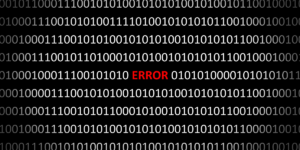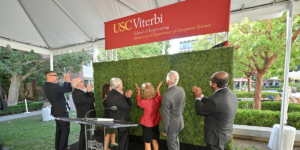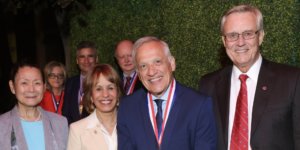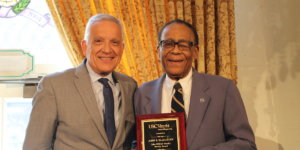The ISI-codirected Center for High Performance Computing and Communications has announced plans to build up its cluster computer to make it one of the top five in the nation, and named a new chair for its faculty advisory council. Meanwhile, an internationally renowned team of cluster computing experts have joined USC.
Professor of Engineering Tom Katsouleas is now chair of the HPCC faculty advisory committee. The HPCC is a joint venture of the Information Services Division and the School of Engineering’s Information Sciences Institute.
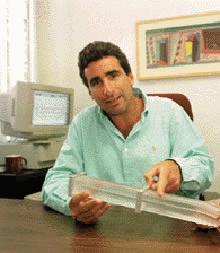
Professor Tom Katsouleas of the School of Engineering’s department of electrical engineering/electrophysis chairs the HPCC Faculty Advisory Council.
HPCC Director Jim Pepin (who also serves as ISD’s chief technology officer) and ISD Deputy Chief Information Officer Mike Pearce at the same time jointly announced the acquisition of an additional 256 “nodes” (two-processor units) to add to the existing 320-node Linux cluster supercomputer HPCC operates on the USC University Park campus.
The USC cluster is already the 17th largest of its kind in the country, and the largest in Southern California academia. When the buildout to 576 nodes is accomplished — the job is planned for completion in mid-October — the USC machine will be one of the top 5 in the nation.
Additional improvements to the cluster architecture include acquisition of special switch hardware to accommmodate the new nodes, and “increasing the performance of the core disk systems,” Pepin said.
Among the expanded cluster’s users will be the recently recruited team of supercomputing experts Priya Vashishta, Rajiv Kalia and Aiichiro Nakano, who have received joint appointments in the USC College of Letters, Arts & Sciences and in the USC School of Engineering. They will bring with them seven post-doctoral researchers, 10 graduate students, a systems manager and their own 166-node cluster computer.
The HPCC will also continue its monthly series of lectures by researchers and computer experts to familiarize the campus with the possibilities of cluster computing and other new computational paradigms. This year’s program began September 27 with a presentation by Sun Microsystems computer expert John Feo.
ISD’s Kay Ferdinandsen, who is organizing the series, says the next scheduled talk will feature ISI Computational Science Division Director Robert Lucas, who will speak October 25.
Incoming advisory committee chair Katsouleas believes HPCC and the expansion of the Linux cluster sends a crucial message to faculty: “It assures us that USC will stay at the forefront of scientific research support,” he says.
Katsouleas says that the existence of the cluster on campus will, in addition to furthering on-campus research, also help to train faculty and students in the techniques necessary to use machines at the next level — the giant, national supercomputers.
One on-campus believer is Tom Jordan, LAS professor of earth sciences, who is now using the USC Linux cluster in his efforts to image the earth using natural earthquakes.
Using work stations, Jordan said, it took approximately three days to compute one of the thousands of sampling functions needed to create an image.
Using the HPCC Linux cluster, the same computation takes 20 minutes. “As a result,” said Jordan, with obvious pride and pleasure, “we were able to go from one-dimensional approximations to two dimensional to three dimensional images.”
Published on October 3rd, 2002
Last updated on August 10th, 2021




